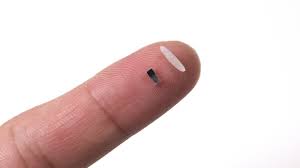
Breaking News
 Michael Malice: This Elite Class Will Trigger America's Coming Collaps
Michael Malice: This Elite Class Will Trigger America's Coming Collaps
 OUTRAGE IN DC: Court Allows Squatter to Remain in Woman's Home for MONTHS...
OUTRAGE IN DC: Court Allows Squatter to Remain in Woman's Home for MONTHS...
 Zelenskyy Says He Had 'Long And Substantive' Phone Call With Witkoff, Kushner...
Zelenskyy Says He Had 'Long And Substantive' Phone Call With Witkoff, Kushner...
 Oversupply Warning Jolts India's Solar Buildout
Oversupply Warning Jolts India's Solar Buildout
Top Tech News
 Build a Greenhouse HEATER that Lasts 10-15 DAYS!
Build a Greenhouse HEATER that Lasts 10-15 DAYS!
 Look at the genius idea he came up with using this tank that nobody wanted
Look at the genius idea he came up with using this tank that nobody wanted
 Latest Comet 3I Atlas Anomolies Like the Impossible 600,000 Mile Long Sunward Tail
Latest Comet 3I Atlas Anomolies Like the Impossible 600,000 Mile Long Sunward Tail
 Tesla Just Opened Its Biggest Supercharger Station Ever--And It's Powered By Solar And Batteries
Tesla Just Opened Its Biggest Supercharger Station Ever--And It's Powered By Solar And Batteries
 Your body already knows how to regrow limbs. We just haven't figured out how to turn it on yet.
Your body already knows how to regrow limbs. We just haven't figured out how to turn it on yet.
 We've wiretapped the gut-brain hotline to decode signals driving disease
We've wiretapped the gut-brain hotline to decode signals driving disease
 3D-printable concrete alternative hardens in three days, not four weeks
3D-printable concrete alternative hardens in three days, not four weeks
 Could satellite-beaming planes and airships make SpaceX's Starlink obsolete?
Could satellite-beaming planes and airships make SpaceX's Starlink obsolete?
World's Smallest Pacemaker is Made for Newborns, Activated by Light, and Requires No Surgery

Although it can work with hearts of all sizes, the pacemaker is particularly well-suited to the tiny, fragile hearts of newborn babies with congenital heart defects.
A pacemaker is an implantable device that helps maintain an even heart rate, either because the heart's natural cardiac pacemaker provides an inadequate or irregular heartbeat, or because there is a block in the heart's electrical conduction system.
Smaller than a single grain of rice, the pacemaker is paired with a small, soft, flexible, wireless, wearable device that mounts onto a patient's chest to control pacing. When the wearable device detects an irregular heartbeat, it automatically shines a light to activate the pacemaker.
These short light pulses, which penetrate through the patient's skin, breastbone, and muscles, control the pacing.
Designed for patients who only need temporary pacing, the pacemaker simply dissolves after it's no longer needed. All the pacemaker's components are biocompatible, so they naturally dissolve into the body's biofluids, bypassing the need for surgical extraction.
The paper demonstrates the device's efficacy across a series of large and small animal models as well as human hearts from deceased organ donors.
"We have developed what is, to our knowledge, the world's smallest pacemaker," said John A. Rogers, PhD, professor of Neurological Surgery, Dermatology, and in the McCormick School of Engineering, who led the device development.
"There's a crucial need for temporary pacemakers in the context of pediatric heart surgeries, and that's a use case where size miniaturization is incredibly important. In terms of the device load on the body—the smaller, the better."

 First totally synthetic human brain model has been realized
First totally synthetic human brain model has been realized Mach-23 potato gun to shoot satellites into space
Mach-23 potato gun to shoot satellites into space

